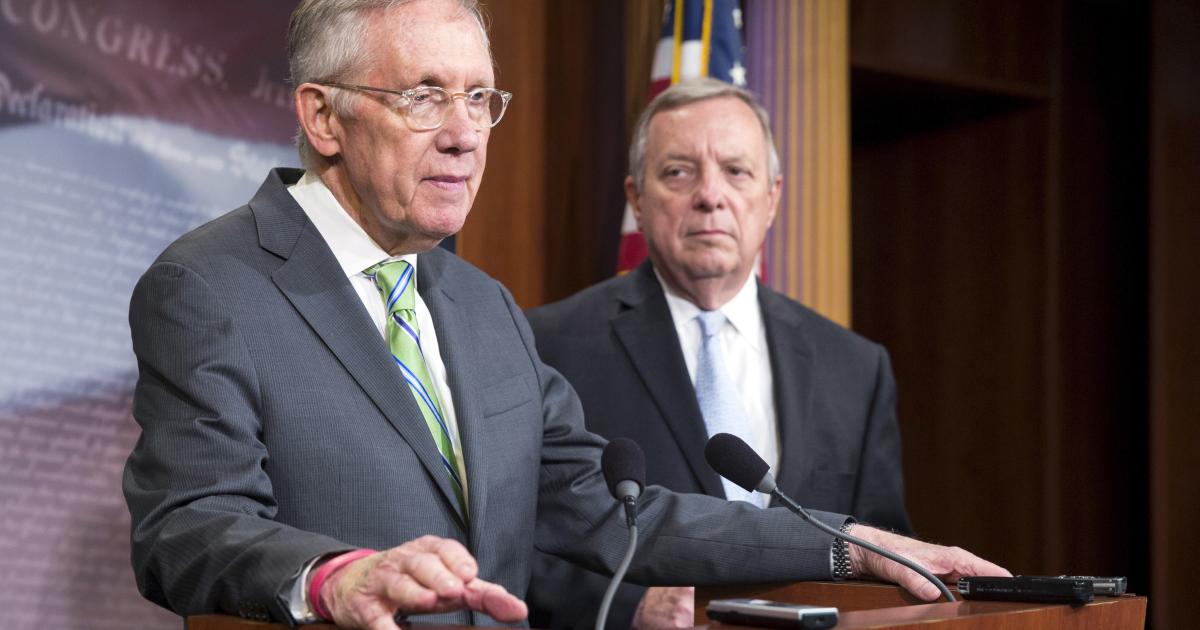You are stuck on that idea it seems. There is Cheney and Kinzinger, beyond that McCarthy pulled his five appointees from sitting on the panel. They were all flamethrowers bent on destroying the truth not seeking it. Your complaint is with McCarthy for his disingenuous actions.
Rules are rules unless it comes to the Democrats...Democrats changed the rules regarding judicial appointments:
You remember right? How'd that work out ?
---------------------------------------------------------------------
This story is from 2018...
On Nov. 21, 2013, Senate Democrats exercised the so-called “nuclear option” to abolish the filibusters of nominations they had pioneered a decade earlier.
This is a story of how their best-laid plans went awry.
Senate Democrats started planning a hostile takeover of the judicial appointment process in 2001. Just days after President George W. Bush took office, Senate Democratic leader Tom Daschle, D-S.D., said they would use “whatever means necessary” to fight his judicial nominees. At a May retreat in Florida, that vow became a strategy to, as the New York Times described it at the time, “change the ground rules” of the confirmation process.
Unlike the House, which prioritizes action and does everything by simple majority, the Senate emphasizes deliberation and first requires a supermajority to end debate, or invoke cloture. A filibuster occurs when an attempt to end debate fails — Rule 22 today requires 60 votes.
While the filibuster became part of the legislative process in the early 1800s, it did not become part of the confirmation process until after Republicans captured the Senate in 2002. In just 16 months, from March 2003 to July 2004, Democrats forced the Senate to take 20 cloture votes on 10 different nominees to the U.S. Court of Appeals. Every one of those attempts to end debate failed.
Democrats once again took over the Senate majority in 2006, and President Barack Obama was elected two years later. For the first time in a dozen years, they controlled the entire judicial appointment process. After 2010, the Republican-controlled House of Representatives, however, did not support key parts of Obama’s political agenda. Obama decided that if he couldn’t enact his agenda, he would impose it by executive branch bureaucrats issuing regulations and sympathetic judges approving them when challenged in court. But there was a wrinkle.
By the end of 2013, the primary court for reviewing agency regulations, the U.S. Court of Appeals for the District of Columbia Circuit, had four Republican-appointed judges, four Democrat-appointed judges, and three vacancies. Republicans followed the Democrats’ playbook, using the filibuster to block four Obama nominees to that court.
The solution seemed simple: Democrats had to abolish the very nomination filibusters they had used so aggressively just a decade earlier. But it would take 67 votes to directly amend Rule 22 so it no longer required “three-fifths of the senators duly chosen and sworn” to invoke cloture.
On Nov. 21, 2013, Senate Democrats deployed the “nuclear option,” so named because of its explosive impact on Senate rules and traditions. They voted 52-48 to reinterpret the words “three-fifths” in Rule 22 to mean “simple majority.” As Sen. Orrin Hatch, R-Utah, would later explain, 52 senators made 60 equal 51.
Democrats got what they wanted when Obama quickly filled those three D.C. Circuit vacancies. In 2014, the Senate confirmed 89 judges, twice the annual average and the third-highest annual total in history.
But, as they say, be careful what you wish for. Republicans re-captured the judicial appointment process by winning the Senate in 2014 and the White House two years later. In April 2017, they used the same nuclear option to prohibit filibusters of the one position left alone by Democrats: the Supreme Court. As a result, Justices Neil Gorsuch and Brett Kavanaugh will be serving for decades to come, and
President Trump may be able to appoint another justice in the next two years.
Trump’s judicial nominees have been opposed more strongly than any in history. Three times as many of his judicial nominees have received negative confirmation votes than the previous five presidents combined at this point. Twenty-five of his 29 appointees to the U.S. Court of Appeals (a record in a new president’s first two years) received more than 40 negative votes. That would have been enough in the pre-nuclear option days to prevent their confirmation by filibuster.
The fight over the role that judges should play in our system of government is monumentally important. Rather than be worthy combatants in that fight, presenting and defending their activist vision for the judiciary, Democrats changed the rules to rig the fight.
As Dr. Phil often says: How’s that working for you?
This piece originally appeared in The Washington Examiner
Wednesday is the fifth anniversary of an event that is still changing the course of Senate and judicial history. On Nov. 21, 2013, Senate Democrats exercised the so-called “nuclear option” to abolish the filibusters of nominations they had pioneered a decade earlier. This is a story of how their...

www.heritage.org





